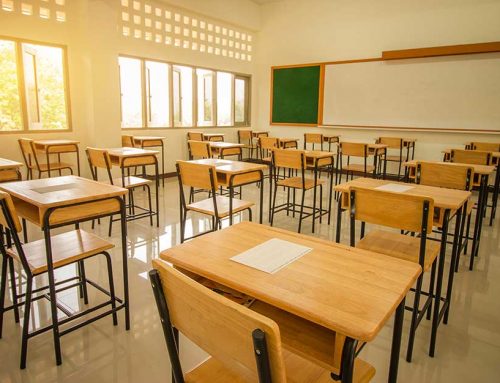Students of Grade 5 D completed their first unit of inquiry using design thinking process. As part of their end of unit assessment under the transdisciplinary theme ‘Sharing the planet’, they chose to select a real-life conflict situations faced by most of us in our day to day life, such as conflict with self, conflict with others, conflict within the community, etc, thus making a connection with the central idea – ‘Reaching a resolution during periods or moments of conflict is influenced by the actions and reactions of all involved.’
Students looked at finding innovative solutions using the design thinking process, which consists of 5 stages – empathize, define, ideate, prototype and test. They started with their first stage of the process with ‘empathizing’ with others (teachers and students) and understanding their problems by conducting a survey which helped them to collect the data from the school community. Based on the data collected and the pie-chart analysis based on the same, students understood that majority of the people surveyed faced some kind of conflict in their life. Survey analysis helped them to understand-sort various reasons for conflict within the community. The major reason that emerged was lack of ownership. Students identified the root cause of the problem by doing 5 WHYs which lead them to frame the problem statement. The problem statement for conflict within the community was: Lack of ownership towards community leads to conflict among members, for which they thought of a creative approach to solving the problem.
Next in the ideate stage, all students first individually shared their possible ideas/ solutions. Under the Prototype stage, they suggested producing a minimal amount of waste at home. This can be achieved by making zero wet waste and reducing the dry waste ( especially plastic bottles) as much as possible.
Zero wet waste: Students suggested an eco-friendly domestic food waste disposer to flush the kitchen waste down the drain. A food waste disposer unit is usually electrically powered, installed inside the kitchen. This unit shreds food waste into pieces small enough generally less than 2 mm to pass through drainage. The disposer can be easily installed below the sink in the kitchen. It has cutting-edge technology mechanisms to crush food wastes (all kinds of food waste be it vegetables, fruit peels, or even bones) in very little time, utilizing less electricity and clearing blocks to ensure free flow of water and thus producing zero wet waste.
Dry Waste: For dry waste, students suggested being associated with the Hyderabad government under their project Plastic Waste Management Strategy and Action Plan.
Three reverse vending machines (RVMs) were installed in Hyderabad to ensure systematic collection and transport of PET bottles to authorized plastic recycling facilities in the city. People can deposit waste PET bottles in the RVM and receive rewards in the form of cashback or discounts on bus tickets. The bottles would undergo pre-processing inside the machine, and later get converted into clothing items such as T-shirts and caps.
Suggestion-As responsible citizens of the country, volunteers of each residential community will be responsible for collecting the plastic bottles and submitting them to the vending machine and the rewards will be used for the community or the housing staff.
Students thought of suggesting the same creative solution in our school kitchen.






Leave A Comment